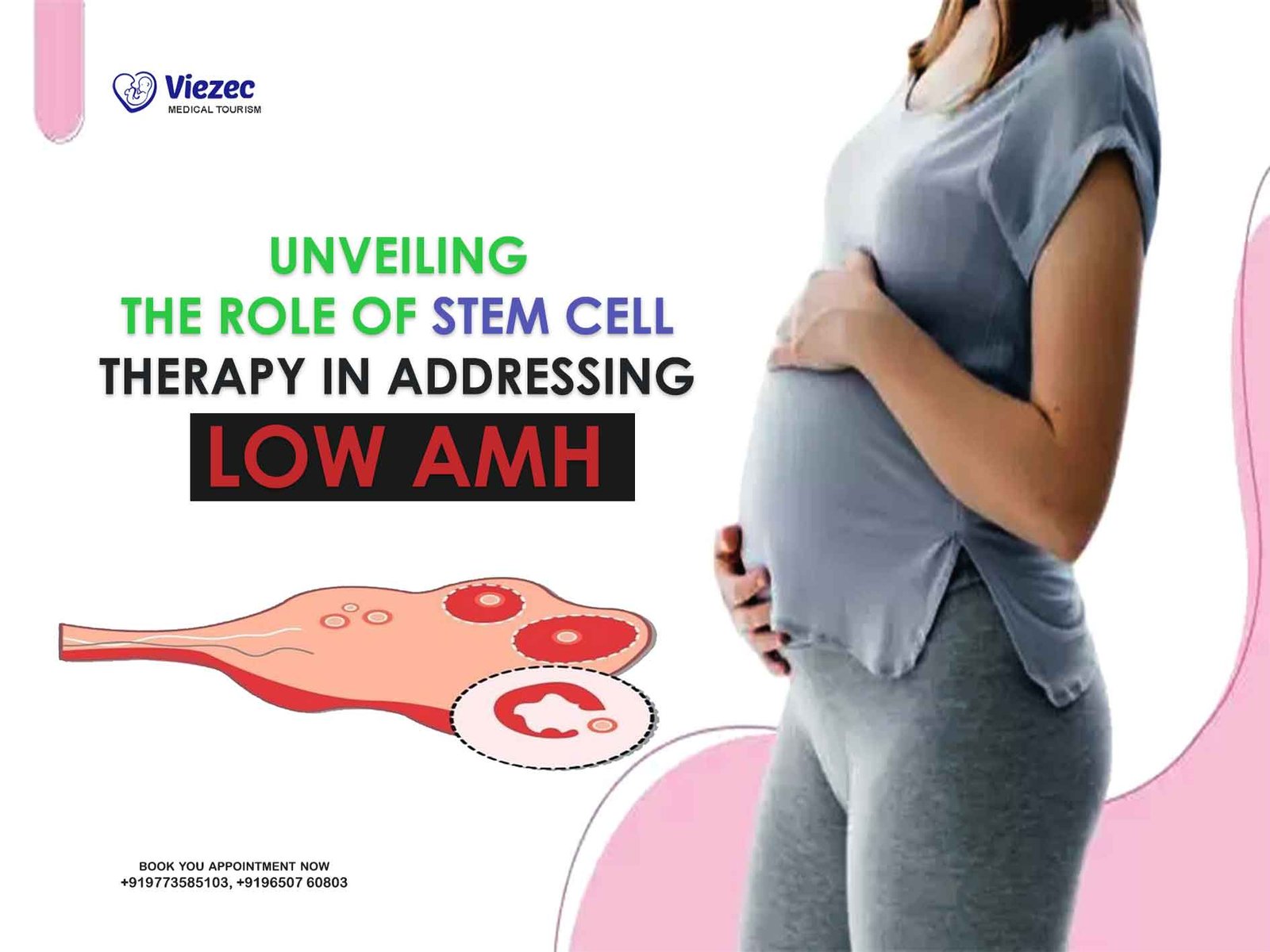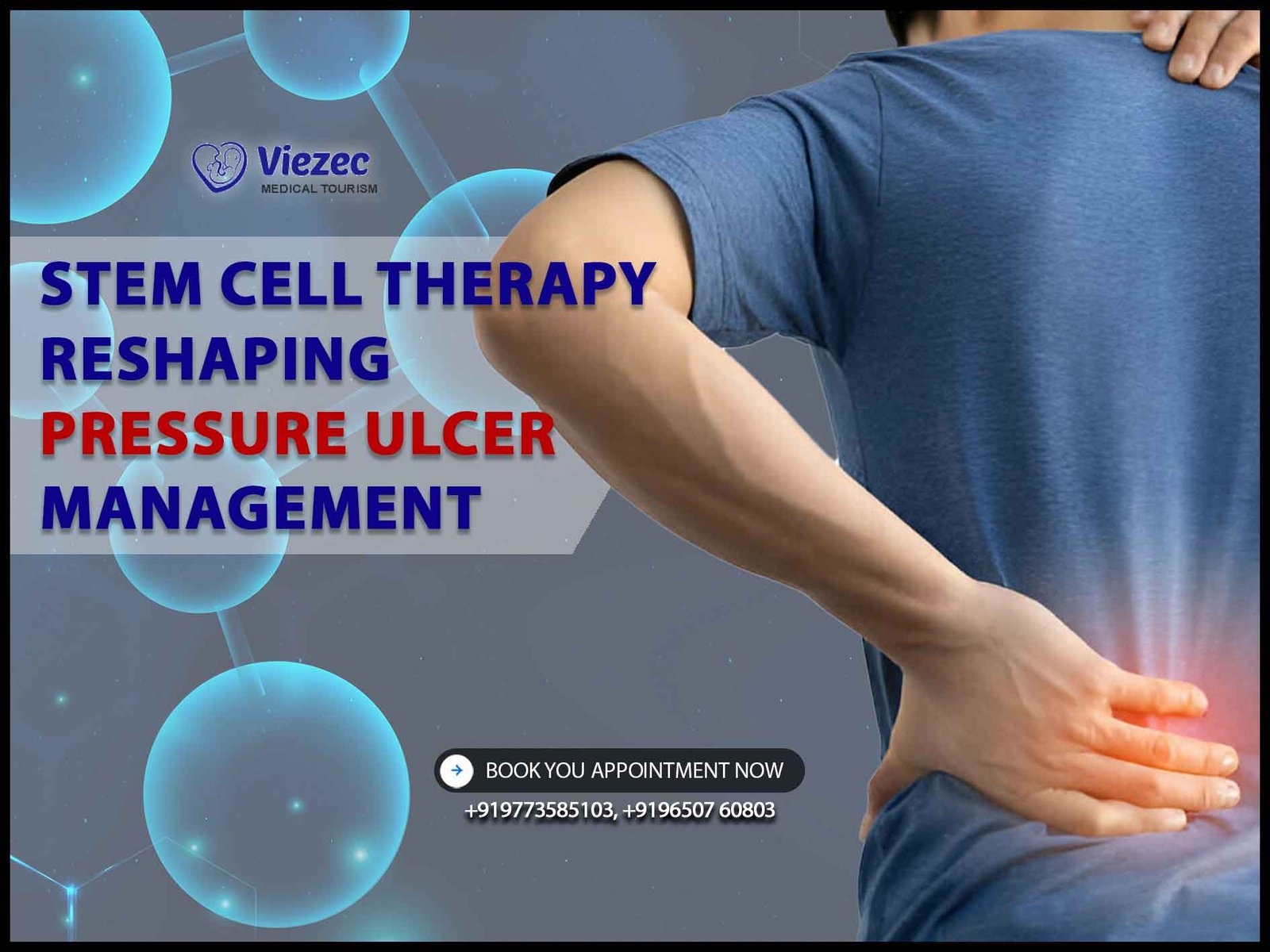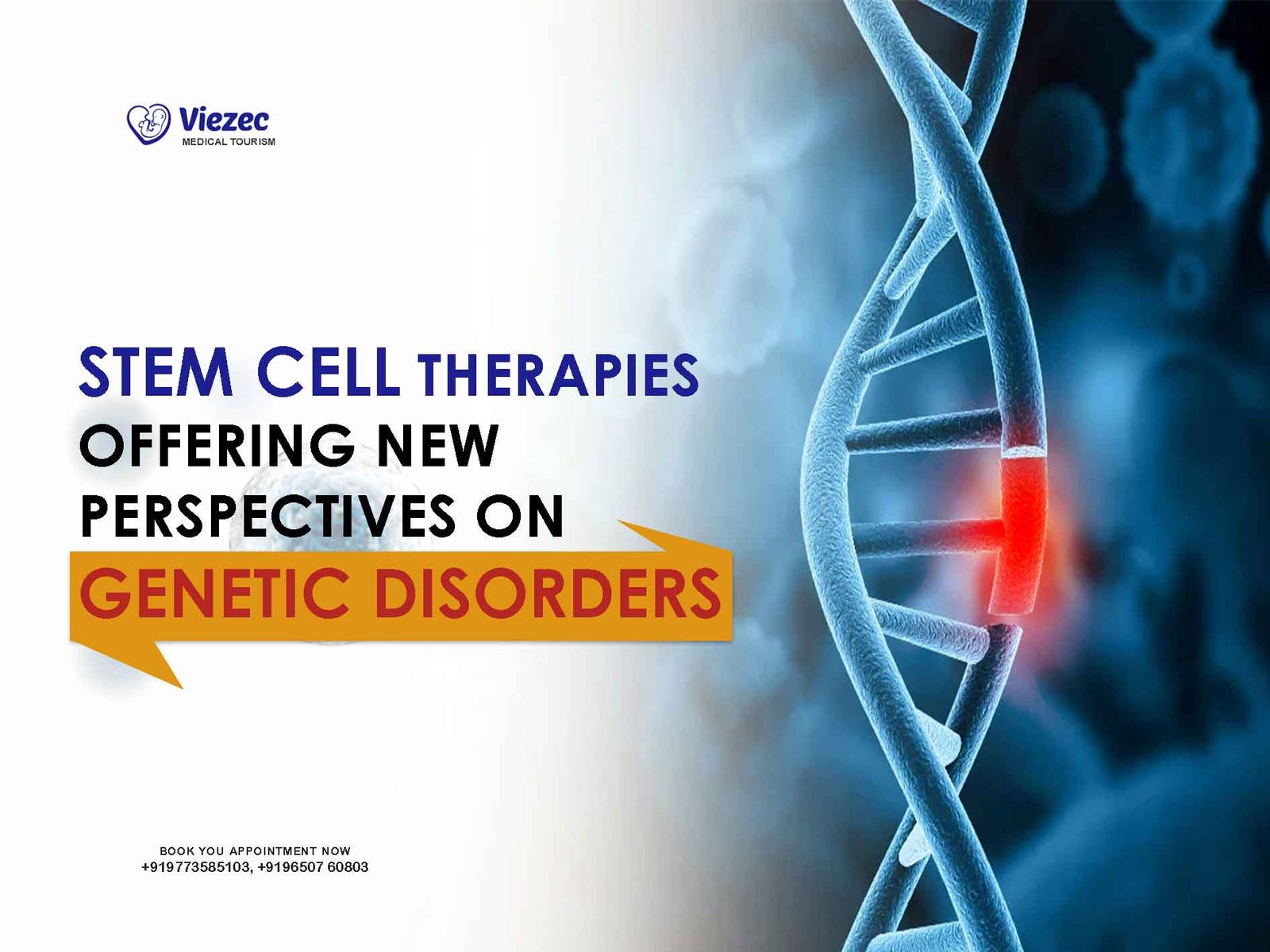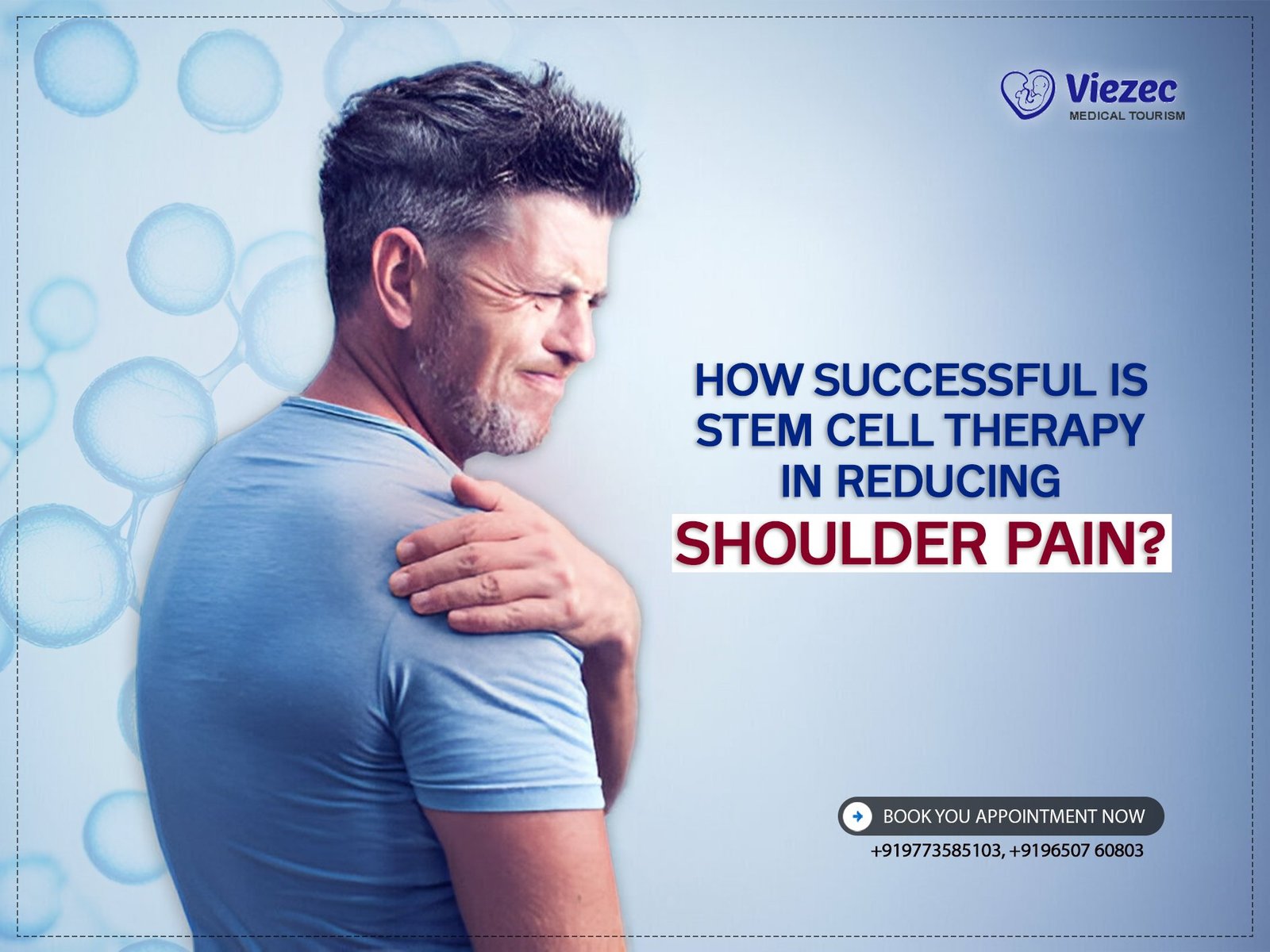Low Anti-Müllerian Hormone (AMH) levels in women can indicate a reduced ovarian reserve, potentially impacting fertility and leading to challenges in conceiving. Recent advances in medical science and regenerative medicine have brought about new treatments for addressing low AMH, particularly the use of stem cell therapy. We will explore the role of stem cell therapy in addressing low AMH, including an overview of low AMH, the basics of stem cell therapy, and the potential benefits and challenges associated with this treatment.
What Is Low AMH?
Understanding Anti-Müllerian Hormone (AMH)
Anti-Müllerian Hormone (AMH) is a hormone produced by granulosa cells in ovarian follicles. It serves as a marker of ovarian reserve, which reflects a woman’s reproductive potential based on the number of eggs remaining in her ovaries. AMH levels are relatively stable throughout a woman’s menstrual cycle and can be measured with a blood test.
Causes and Effects of Low AMH
Low AMH levels are generally associated with diminished ovarian reserve (DOR) and can be indicative of reproductive aging, premature ovarian insufficiency, or other factors affecting the ovaries. Causes of low AMH can include:
- Age: AMH levels naturally decline as women age, particularly after the age of 35.
- Genetics: Genetic factors can influence ovarian reserve and the production of AMH.
- Medical Treatments: Chemotherapy, radiation, and surgeries involving the ovaries can decrease ovarian reserve and AMH levels.
- Endocrine Disorders: Conditions such as polycystic ovary syndrome (PCOS) can affect AMH production.
Low AMH levels are associated with reduced fertility, difficulty in conceiving, and potential challenges with in vitro fertilization (IVF). Women with low AMH may also experience irregular menstrual cycles, decreased response to fertility treatments, and an increased risk of miscarriage.
Basics of Stem Cell Therapy
What Are Stem Cells?
Stem cells are undifferentiated cells with the potential to develop into different types of specialized cells in the body. They have the unique ability to self-renew and differentiate into various cell types, making them valuable for regenerative medicine.
Types of Stem Cells
There are several types of stem cells:
- Embryonic Stem Cells: Derived from early-stage embryos, these cells are pluripotent and can differentiate into almost any cell type.
- Adult Stem Cells: Found in various tissues throughout the body, these cells are multipotent and can differentiate into a limited range of cell types.
- Induced Pluripotent Stem Cells (iPSCs): These are adult cells reprogrammed to behave like embryonic stem cells and can differentiate into various cell types.
How Stem Cell Therapy Works
Stem cell therapy involves the use of stem cells to repair or replace damaged or dysfunctional tissues in the body. This therapy can be administered through injections, transplants, or other means depending on the specific medical condition being treated.
Stem cells can potentially improve tissue function by:
- Promoting regeneration: Stem cells can differentiate into specialized cells needed for tissue repair.
- Releasing growth factors: Stem cells secrete molecules that stimulate healing and repair.
- Modulating the immune response: Stem cells can reduce inflammation and support the immune system’s ability to heal tissues.
Stem Cell Therapy and Low AMH
Potential of Stem Cell Therapy for Low AMH
Stem cell therapy holds promise as a treatment for low AMH and diminished ovarian reserve. The therapy aims to rejuvenate the ovarian tissue, enhance egg quality, and restore hormonal balance. Several potential benefits of stem cell therapy for low AMH include:
- Ovarian rejuvenation: Stem cells may improve ovarian function by promoting the development of new follicles and improving egg quality.
- Hormone regulation: Stem cells may help regulate AMH levels and other reproductive hormones.
- Increased fertility: Improved ovarian function may lead to increased fertility and better outcomes with assisted reproductive technologies (ART).
Types of Stem Cells Used in Treatment
Different types of stem cells are being explored for their potential in treating low AMH:
- Mesenchymal Stem Cells (MSCs): Derived from bone marrow, adipose tissue, or other sources, MSCs can promote ovarian regeneration and hormone production.
- Human Amniotic Epithelial Cells (hAECs): These cells, obtained from the amniotic membrane, have been shown to have regenerative properties and may support ovarian function.
- Ovarian Stem Cells (OSCs): While controversial, some research suggests that OSCs exist in the ovaries and may be involved in follicle development and regeneration.
How Stem Cell Therapy Is Administered
Stem cell therapy for low AMH is typically administered through an injection into the ovaries. The procedure may involve:
- Harvesting: Stem cells are obtained from the patient’s own tissues (e.g., bone marrow, adipose tissue) or from other sources.
- Preparation: The stem cells are isolated, purified, and sometimes cultured in a laboratory to increase their numbers.
- Injection: The prepared stem cells are injected directly into the ovaries to promote regeneration and repair.
Research and Clinical Trials
Research and clinical trials are ongoing to evaluate the safety and efficacy of stem cell therapy for low AMH. Preliminary results are promising, with some studies showing improved ovarian function and increased pregnancy rates in women with low AMH. However, further research is needed to establish standardized protocols and determine the long-term effects of this therapy.
Benefits of Stem Cell Therapy for Low AMH
Ovarian Rejuvenation
Stem cell therapy can promote ovarian rejuvenation by stimulating the growth and development of new follicles. This can potentially improve ovarian function and increase the chances of natural conception.
Hormonal Balance
Stem cells may help regulate AMH levels and other reproductive hormones, improving the overall hormonal balance necessary for healthy ovarian function.
Improved Egg Quality
By promoting ovarian regeneration, stem cell therapy may lead to the production of higher-quality eggs, which can enhance fertility and improve the success rates of assisted reproductive technologies (ART).
Non-Invasive Treatment
Stem cell therapy is a minimally invasive treatment option that may offer a less traumatic alternative to surgical interventions for women with low AMH.
Potential for Personalized Medicine
Stem cell therapy can be tailored to the individual, allowing for personalized treatment plans that take into account the patient’s unique medical history and reproductive goals.
Cost and Accessibility
Stem cell therapy can be expensive, and access to the treatment may be limited, especially in certain regions where the therapy is not yet widely available.
Advancements in Research
Ongoing research is focused on improving stem cell therapy for low AMH by:
- Identifying Optimal Stem Cell Types: Researchers are exploring which types of stem cells are most effective for ovarian rejuvenation.
- Developing Standardized Protocols: Standardizing procedures and dosages can help improve safety and efficacy.
- Monitoring Long-Term Outcomes: Long-term follow-up studies are needed to assess the sustained impact of stem cell therapy on ovarian function and fertility.
Integration with Assisted Reproductive Technologies (ART)
Stem cell therapy may be integrated with ART to improve treatment outcomes. For example, stem cell therapy could be used to enhance ovarian function before undergoing in vitro fertilization (IVF).
Personalized Medicine and Genetic Testing
Advances in genetic testing and personalized medicine may allow for more precise targeting of stem cell therapy based on an individual’s genetic profile and reproductive history.
The Landscape of Stem Cell Therapy in India
India has emerged as a hub for stem cell research and clinical applications, with several renowned institutes and biotechnology companies actively engaged in advancing the field of regenerative medicine. The country boasts a rich pool of scientific talent, state-of-the-art infrastructure, and a conducive regulatory environment, making it an attractive destination for stem cell research and therapy development.
Research Initiatives
Indian researchers and institutions have made significant contributions to stem cell research, exploring novel therapeutic strategies for a wide range of medical conditions, including infertility. Collaborative efforts between academia, industry, and government agencies have facilitated the translation of basic research findings into clinical applications, driving innovation in stem cell-based therapies.
Clinical Applications
Stem cell therapy is increasingly being explored as a treatment option for various health conditions in India, including neurological disorders, cardiovascular diseases, orthopedic injuries, and infertility. Clinical trials evaluating the safety and efficacy of stem cell transplantation for ovarian rejuvenation and fertility enhancement are underway, offering hope to individuals struggling with infertility issues, including low AMH.
Regulatory Framework
India has established regulatory guidelines governing the conduct of stem cell research and clinical trials to ensure patient safety and ethical standards. The Indian Council of Medical Research (ICMR) and the Drug Controller General of India (DCGI) oversee the approval and regulation of stem cell-based interventions, promoting responsible research practices and patient welfare.
New Hope for fertility Challenges
Stem cell therapy holds great promise as a potential treatment for low AMH and diminished ovarian reserve. By promoting ovarian rejuvenation, hormone regulation, and improved egg quality, stem cell therapy may offer new hope to women facing fertility challenges. However, more research is needed to fully understand the long-term effects and safety of this treatment.
As the field of regenerative medicine continues to advance, stem cell therapy may become a key component of personalized reproductive medicine. With careful consideration of ethical, safety, and regulatory concerns, stem cell therapy could pave the way for innovative treatments that improve reproductive health and fertility outcomes for women worldwide.









